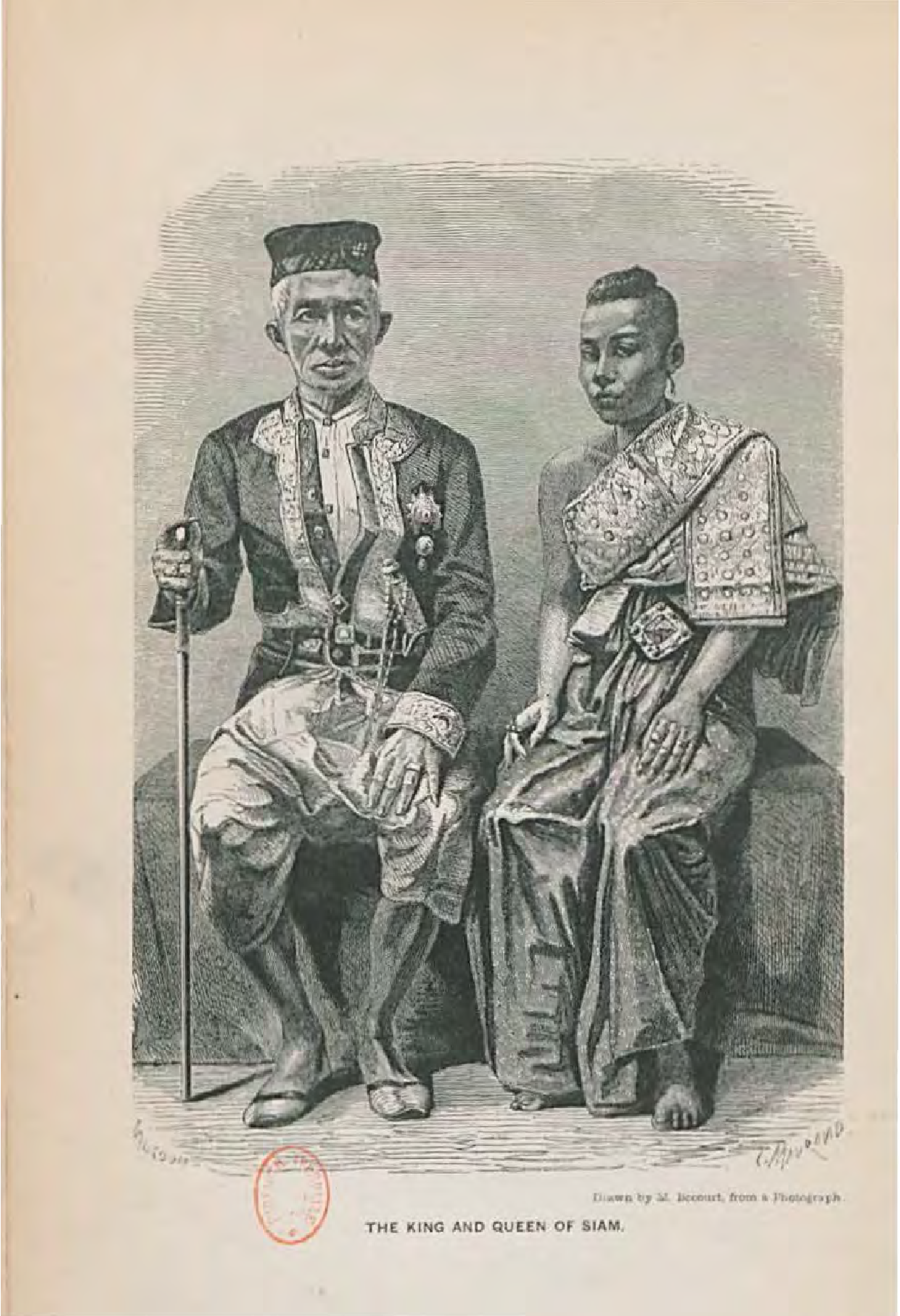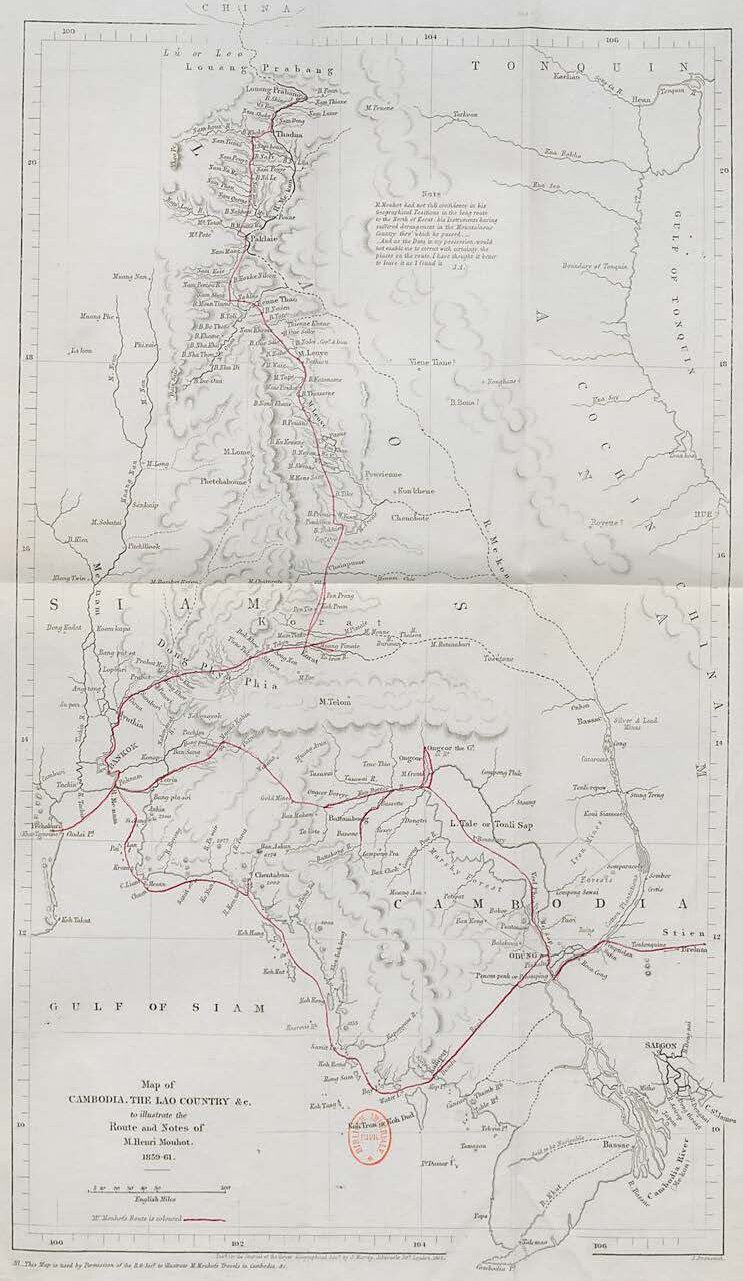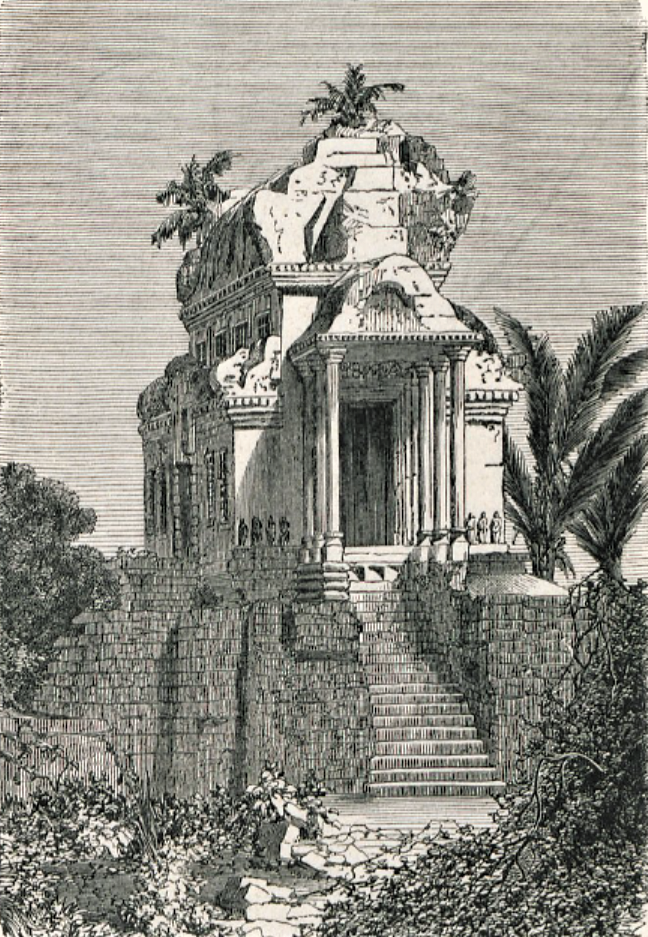Travels in the Central Parts of Indo-China (Siam), Cambodia and Laos
by Henri Mouhot & Charles Mouhot & Joseph Justus Belinfante
The English, more complete version of the historic travelogue by naturalist and explorer Henri Mouhot.
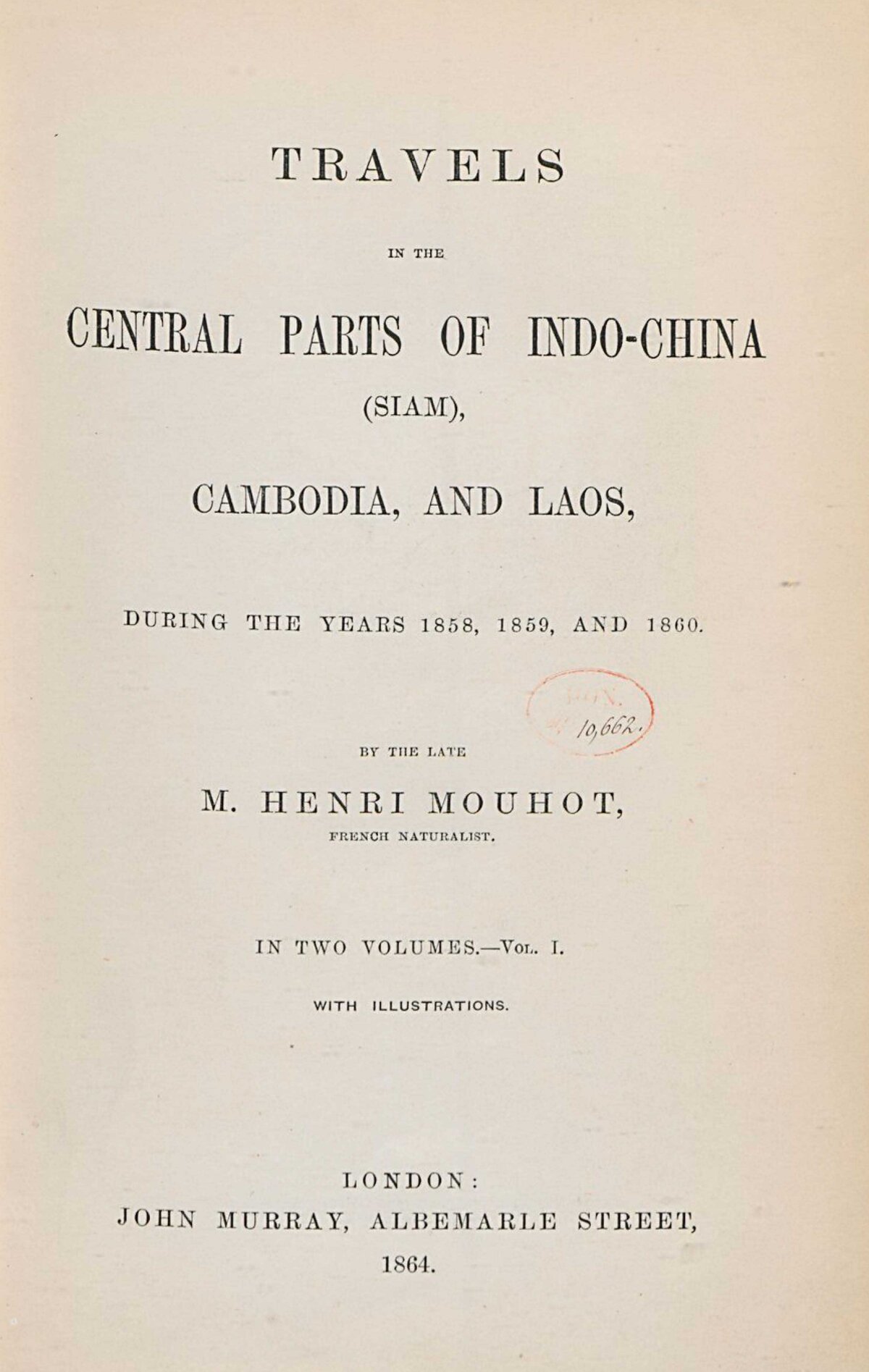
Type: e-book
Publisher: John Murray, London, 2 vols.
Edition: via www.gallica.bnf.fr | ADB formatting
Published: 1864
Author: Henri Mouhot
Pages: 642
ISBN: via www.gallica.bnf.fr | ADB edition
Language : English
ADB Library Catalog ID: eMOUH3
pdf 89.9 MB
When Henri Mouhot died at 35 years of age near Luang Prabang (Laos) on Nov. 10, 1861, his notes, journals and correspondence were sent back to his brother Charles in England (Jersey and London), from where Henri had initially sailed to Bangkok on April 27, 1857.
While the French side of the family was somehow reluctant to make public this material, Charles, as well as Henri’s widow Ann (whom he called “Annette” in his letters, a niece of famous Scottish explorer Mungo Park) and his sister-in-law Jane (“Jenny”) pressed forward, with the support of Dutch historian J.J. Belinfante, who had understood the magnitude of Mouhot’s findings in the fields of archaelogy, ethnography, naturalism and history.
On Dec. 1st, 1862, Charles had completed the English version, much more detailed and ambitious than the French Voyage, which was initially carried by the French journal Le Tour du Monde in 1863. The former, available email hidden; JavaScript is required, includes precious documents such as a Cambodian Vocabulary, a detailed map of Mouhot’s itinerary, and several letters to and from the distinguished explorer.
What can be gleaned from this version?
- It has been claimed that Mouhot “discovered” Angkor (Ongcor) by chance, while wandering along the Tonle Sap tributaries or even while “hunting butterflies”. The letters published in the English version point to the opposite direction: it is after meeting with King Ang Duong in Kampot (Kamput), and later with King Norodom in Udong (Odung), thus following the Cambodian sovereigns recommendations, that Mouhot headed to Angkor. He also needed kingly ‘sauf-conduits’ to cross the Cambodian-Siamese border, then established across the Tonle Sap Lake (and materialized by a mast stuck in the water). In his 20th Dec. 1859 letter to Samuel Stevens, his main correspondent at the Royal Society of Geography, he wrote: “P.S.: I arrived last evening at Pinhalú, in perfect health, and am now about to go northward to visit the famous ruins of Ongcor, and then return to Bangkok.”
- Where was Pinhalú located, and why did the famous journey to Angkor start from there? In a letter to Dr. Stevens from Brenlun (Banlung?), “among the savages of Stien”, dated Oct. 15 1859, and read at the RSG assembly in March 1862, Mouhot notes that Pinhalú is a village located “9 miles from the capital” (Udong, which remained the capital city until 1866), and it has to be modern Ponhea Leu, 14 kms south of Udoung. This indication differs with researcher Dawn Rooney’s essay, where it is stated that in Udong “Mouhot met the Second King of Cambodia (Norodom, reigned 1860 – 1904) who provided him with wagons and elephants to continue north to the village of Pinhalu where he visited the Stiens, a savage tribe occupying an area east of the Mekong.” ‘Pinhalú’ was then the only Catholic mission in the area, where Mouhot met again with M. Ch. Fontaine, a French priest he had met in Bangkok and who helped him to establish his route to Angkor. It also served as Udong harbor on the ‘Me Sap’ (Tonle Sap). D.O. King, considered the first American traveler to visit Angkor, wrote in his letter to the Secretary of the Royal Geographical Society of London (from Newport, Rhode Island, February 7th, 1859) that “on the river below Oodoong the Roman Catholics have a mission establishment at Pina Loo, where we found a bishop and one priest ; and, descending the river, we stopped at Pelomping (Phnom Penh), a town on the borders of Cochin China.” In his 1902 Guide du Voyageur, Claudius Madrolle stated: “Pon-héa-lu ou Pin-ha-lu est une ancienne chrétienté. D’Acosta, vicaire général de Malacca vint s’y réfugier après la prise de cette ville par les Hollandais, et fonda en ce lieu en 1692 une église catholique qui, plus tard, devint une résidence d’évêques. Ce village chrétien, d’origine portugaise, se maintint jusqu’en 1867, époque où les partisans du rebelle Poucombo le détruisirent. Depuis, la résidence du vicaire apostolique a été transportée à Pnom-penh. Pon-héa-lu est le chef lieu d’un district indigène de 11 804 âmes, dont 7.022 Cambodgiens, 3.031 Malais, 758 Chinois et 493 Annamites (1901). Cet arrondissement d’une étendue de 110 kmq donne 102 hab. par kmq.” [“Pon-héa-lu or Pin-ha-lu is an ancient Christian community. D’Acosta, vicar general of Malacca came to take refuge there after the capture of this city by the Dutch, and founded a Catholic church in this place in 1692 which later became a residence of bishops. This Christian village, of Portuguese origin, was maintained until 1867, when the partisans of the rebel Poucombo destroyed it. Since then, the residence of the apostolic vicar was transported to Pnom-penh. Pon-héa-lu is the chief town of an indigenous district of 11,804 souls, including 7,022 Cambodians, 3,031 Malays, 758 Chinese and 493 Annamites (1901). The district boasts an area of110 sqkm, thus 102 inhabitants per sqkm.”
- From Henri’s very last letters, it is clear that, before being fatally sruck by paludism and yellow fever, the explorer intended to travel back to Cambodia, even if he was well-aware of the difficulties of southwars navigation of the Mekong River. He was particularly fond of Cambodia, its people, landscapes, ruins, flora and fauna, and had befriended both Kings Ang Duong and Norodom during his previous visit.
- In his letter to Charles dated 27th July 1861, Henri made manifest his intention to reconstruct his naturalist collection gathered in Siam, which had been lost in the wreck of the Sir James Brooke ship: “I have also obtained some rare and interesting conchological specimens. As for animals, I have but few; some monkeys and a good many serpents {…) and by the end of the year I trust to have 4000 insects.”
email hidden; JavaScript is required
Tags: French explorers, 19th century, Siam, Lao, King Ang Duong, King Norodom I
About the Author
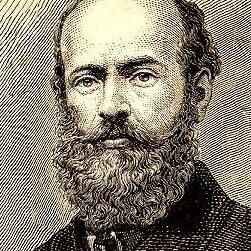
Henri Mouhot
Philologist, self-taught photographer and naturalist Henri Alexandre Mouhot (15 May 1826, Montbeliard, France ‑10 Nov. 1861, Naphan, Laos) started exploring South East Asia in 1857 with the support of the Royal Geographical Society and the Zoological Society of London. French authorities never supported his journeys aimed at natural sciences research.
Mouhot´s connection with Great Britain was also personal since he married in 1856 the granddaughter (or niece?) of famous Scottish explorer Mungo Park (1771−1806), Annette Park (18??, Berwick-on-Tweed — 1894), and lived with her in Jersey. His brother Charles, who traveled with him across Europe and Russia, married another of Park´s relative, Jane Elizabeth Mary Park.
Also, it has been said that John Bowring´s book published in 1857, The Kingdom and People of Siam, gave him the idea of visiting South East India. Last but not least, his travelogue around South East Asia was first published in London in an edition collated by Charles Mouhot in 1862.
His Journal and letters, later collated in the book Voyage dans les Royaumes de Siam, de Cambodge et de Laos (1868) for the French public, became a sensation for his description of Angkor, which he reached from the South in January 1860 (chapters 18, 19, 20). If he was not the first Westerner to access the Angkorian site, his relation was so vivid, detailed and well-written that ït gave him (posthumously) the reputation of being the first “Angkor rediscoverer”. [in 1874, Hachette Publishers included Mouhot’s book in its popular “Pink Library”, 3d series (“For teenagers, possibly in a library for young girls aged 14 to 18 years).]
Henri Mouhot, was had studied Greek and Latin and taught Greek at a Saint-Petersburg gymnasium during the twelve years he stayed in Russia, took some epigraphic notes on Khmer and Lao languages that are kept at the British Library (collection Or.4736) and can be viewed here. They are parts of Mouhot’s documents and notes which were brought to London by Dr. James Campbell and given to his widow, Anne Mouhot. She gave these papers to the British Museum in 1894, over 30 years after her husband’s death, and the originally loose-leaf papers (most of them dated 1860 and 1861) were recently bound together in book form by the British Museum.
Henri Mouhot died of malaria fever (called “fievre des bois” among the French explorers of Indochina) on Nov 10, 1861, in the vicinity of Luang Prabang, the southernmost Royal city of Laos. His grave, erected in 1867, has been rediscovered in 1989.
According to American Protestant missionary Daniel McGilvary, who visited the area in 1876 – 1877 (in A Half Century Among the Siamese and The Lao, An Autobiography, Fleming H. Revell Company, New York, 1912), “no doubt the real spirits are the malarial germs or the poisonous gas which later we found to be the chief danger of the Chieng Dāo cave. It was in this cave that M. Mouhot, a noted French scientist, contracted the fever from which he died. The natives believed that his death was caused by his rashness in trespassing upon the domain of the spirits who preside over the cave.”
As a naturalist in Laos, Mouhot is credited of numerous discoveries of numerous specimens of insects and shells that were not previously known to Western zoologists, including an impressive black beetle that was later named Mouhotia gloriosa, and an extraordinarily shaped spider now known as Cyphagogus Mouhotii.
About the Editor

Charles Mouhot
Charles Mouhot (1828 — 1904) was a younger brother of Henri Alexandre Mouhot, the famous French explorer who gave a vivid description of Angkor in 1859.
Just a year after Henri’s death in Laos in 1861, Charles Mouhot completed the English translation of his brother’s travelogue, Travels in the Central Parts of Indo-china (Siam), Cambodia and Laos, based on Henri’s personal notes and his letters to Charles as well as to Henri’s wife, Anne (Annette) Mouhot née Park. Dedicated to “the learned Societies of England”, this edition carried a presentation(“Memoir of Henri Mouhot”) by J.J. Belinfante.
Charles Mouhot’s own wife, Jane Elizabeth Mary (Jenny) Mouhot née Park (1831, London — ?), was a cousin of Annette, and both were related to illustrious Scottish explorer Mungo Park, a celebrated explorer of Western Africa.
About the Editor
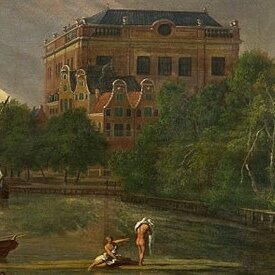
Joseph Justus Belinfante
J.J. (Joseph Justus Zaddik) Belinfante (11 March 1821, Amsterdam — 2 Dec. 1882, Den Haag — The Hague) was a Dutch publicist, self-taught historian and journalist who contributed to the English publication of Henri Mouhot’s notes, journal and letters related to Southeast Asia and Angkor.
Born in an illustrious Jewish family who had emigrated from succesively Turkey, Portugal and Italy from the 17th century, son of Jacob and nephew of Mozes ben-Zaddik Ha-Cohen Belinfante, publicist brothers who had founded the first Jewish publication in the Netherlands, Joseph Justus started his career as a proofreader, both in French and Dutch languages.
He contributed to the Algemeen Handelsblad -- in particular in ‘Mengelingen. Verovering van Algerië. zeventienjarige strijd’ (Miscelleaneous on the Conquest of Algeria, a Seventeen-Year Campaign, 1847), to La Revue des Deux-Mondes –through wich he correspondent with Henri and Charles Mouhot –, to te Moniteur des Indes Orientales et Occidentales — founded in 1846 by the baron Melvill van Carnbee — , to Les Archives Israelites, and co-founded the review Weekblad van het Regt.
Married in 1837 to Bilha Lobato (1804−1880), he remained childless but was close to his several nephews and cousins, who affectionately called him Oom Joost, Uncle Justus. His Life of Michiel Adriaenzoon de Ruyter (Amsterdam, 1844 – 1852, 2 vols.) remains a reference biography of the Dutch admiral (1607−1676) who became a “folk hero” for his prowesses during the Anglo-Dutch Wars and the operations against pirates along the Barbary Coast (North Africa).
Photo: The Amsterdam Esnoga (Portuguese-Jewish Synagogue), of which JJ Belinfante’s grandfather Zaddik was the chief-rabbi; coll. Jewish Portuguese Community

